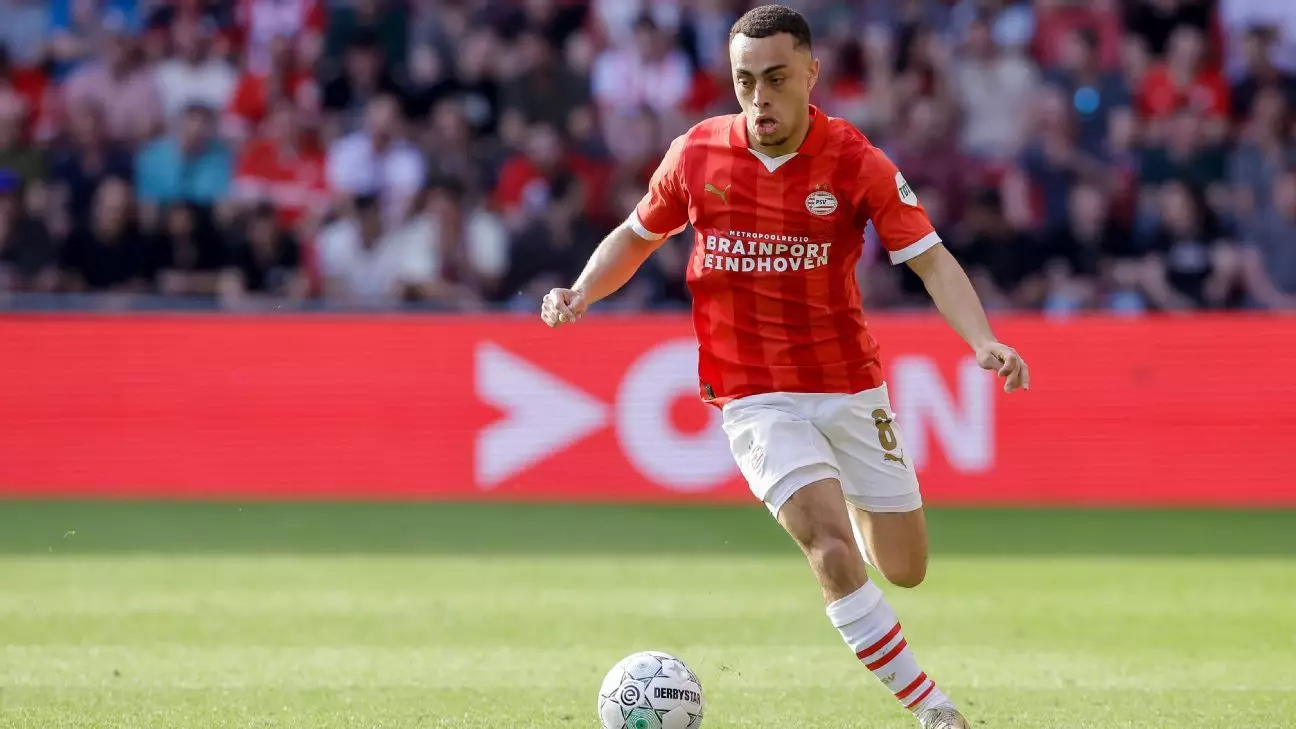On Thursday, Mauricio Pochettino, the head coach of the United States men’s national soccer team, unveiled a 27-player roster for upcoming friendlies against Turkey and Switzerland. While the excitement surrounding the announcement is palpable, the absence of several prominent figures speaks volumes about the current state of U.S. soccer. Missing are galaxy-class talents like Christian Pulisic, Weston McKennie, and Giovanni Reyna, talents that fans generally consider the backbone of the national squad. These omissions prompt a deeper examination of the motivations behind Pochettino’s selections and their implications moving forward.
For many, the disqualification of these star players, particularly Pulisic, is alarming. Coming off an arduous European season, where he accumulated over 3,500 minutes on the pitch while nursing a persistent hip injury, Pulisic’s choice to take a step back seems entirely reasonable. Similarly, Antonee Robinson, having played 37 matches for Fulham, is also opting to recuperate during the summer months. Such strategic withdrawals from top players illuminate the evolving philosophy within the U.S. Soccer Federation: balancing the players’ long-term health with immediate competitive needs.
The Rising Stars and Surprising Omissions
Diving deeper into the coaching strategy, the absence of players like Norwich City’s forward Josh Sargent raises eyebrows. This surprising exclusion might reflect Pochettino’s ambition to create space for emerging talents, aiming to cultivate a new generation poised for future success. Among them are 12 players with fewer than five caps, including five without any international experience. Pochettino’s focus on developing these new faces could be indicative of his longer-term strategy, ensuring that the U.S. national setup remains fresh and competitive as it gears up for the FIFA World Cup in 2026.
Yet, it’s essential to consider the balance between nurturing newcomers and the immediate demands of performance. As the final roster for the Gold Cup approaches, it’s clear that any lack of experience could weigh heavily during competitive fixtures later in the summer. Pochettino and the coaching staff find themselves in a challenging position: How can they foster a winning mentality among less experienced players while simultaneously preparing for high-stakes international tournaments?
Importance of Training and Chemistry
The significance of the Gold Cup transcends mere accolades; it serves as the last significant competitive engagement before the World Cup. Thus, Pochettino’s initial roster choices could potentially hinder crucial chemistry development among central players, which is pivotal during training sessions leading to big events. The opportunity to meld the skills and mentalities of core players while ensuring the freshness brought by emerging talents is a delicate balancing act.
“With the World Cup drawing closer, each friendly is valuable for establishing team cohesion,” Pochettino remarked. This underscores how critical it is to capitalize on every available minute on the training ground. The absence of established players might strain the team’s ability to experiment with tactical strategies effectively. As Pochettino contemplates various formations and combinations, these growing pains could either bolster a new identity for the team or reveal frailties at inopportune moments.
Looking Ahead to Competitions
The U.S. is set to kick off its friendlies in Chicago on June 1, with matches lined up against Turkey and Switzerland. Following these friendlies, the Gold Cup group stage begins with a highly anticipated match against Trinidad & Tobago on June 15. With talented players such as Tim Ream, Tyler Adams, and Matt Turner still in the fold, there’s scope for strategic experimentation. Pochettino’s ability to optimize these seasoned players alongside fresh talent may greatly influence the national lineup’s chemistry as they enter a series of critical fixtures.
Moreover, the return of Sergiño Dest is a crucial development. After enduring a challenging stretch of recovery following a torn ACL, Dest’s presence could prove integral to fortifying the U.S. defense. His experience and skill are likely to stabilize a roster poised on the brink of transition. As the U.S. national team grapples with restructuring, the combination of seasoned veterans and promising new players will ultimately shape its competitive narrative. The upcoming friendlies may not just dictate wins and losses but could herald a potential renaissance for the U.S. Soccer landscape.

